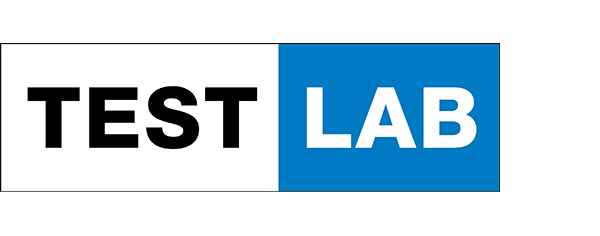Voice
While data communications are ever more prevalent, customers still expect excellent voice quality. How do the Swedish mobile net-works perform in this discipline?
P3‘s two measurement cars drove about 10,000 kilometers in total, covering 21 larger Swedish cities and 33 smaller towns as well as over the connecting roads. Each car carried eight Samsung S7 smartphones which permanently called each other. Our testing equipment registered success ratios, setup times and speech quality.
An important change compared to the test in the previous year is that Telia, Tele2 and Tre have started their deployments of Voice over LTE (VoLTE). So, a number of our test calls in these networks were already set up in this potentially superior technology.
Tele2 and Telia on a par in voice results
In the voice discipline, overall test winner Telia and pursuer Tele2 lead the field and achieved the same number of points. Both Telia and Tele2 score high in large cities, while Tele2 is particularly strong in smaller towns and on the connecting roads. Compared to the previous test, Tele2 managed to improve considerably in the voice category, which might be explained by its recent introduction of VoLTE.
Telenor shows high success ratios in all tested areas, but loses points due to noticeably long call setup times. This sets back this operator so distinctly that Telenor only reaches the third rank in the overall score. Tre still ranks last in the voice category, but shows clear improvements – especially when bearing in mind that we have raised some of the thresholds of our voice scoring compared to the previous test.
VOICE RESULTS AT A GLANCE
Telia and Tele2 share the win in the voice category. In this discipline, Tele2 improved clearly in comparison to the previous year. Telenor still achieves good results, but loses points due to long call setup times. Tre shows slight improvements over the voice results of the previous year.
Data
With data volumes growing exponentially and tight limitations on available bandwidth, all operators face challenges in providing a satisfying user-experience. Which Swedish contender manages to best meet the growing demand?
The volume of mobile data downloads and uploads is constantly growing. While 4G/LTE currently is the best technology to cope with these increasing demands and Swedish 4G networks realise a wide coverage of the population, bandwidth is still a limiting factor for all mobile operators. The current Swedish plans to rededicate the 700 MHz frequency band, formerly used for TV broadcasting, to mobile communications speak for themselves.
So, all operators face challenges to provide sufficient data rates to their customers. Furthermore, a good mobile internet experience demands quick loading times. This includes the download of different types of web-pages, downloads and uploads of large files as well as the increasingly important reception of video streams from services like Youtube.
In order to check the reliability and performance of data connectivity in the Swedish networks, one Samsung Galaxy S7 per operator was installed in one of our test cars while one Sony Xperia XZ per operator was installed in the second car. This distribution was chosen in order to represent the varying performance of different smartphone models in different networks.
The phones constantly performed a suite of tests covering the use cases mentioned before. For most of these checks, success ratios and average session times were logged. For downloads and uploads we also recorded average throughputs. In order to assess typical performance as well as peak speeds, we determined the minimum data rates that are available in 90 per cent of the cases plus the peak date rates that would be surpassed in 10 per cent of the cases.
P3‘s approach for Youtube testing recognizes that this popular video service uses adaptive bit rates. This method strives for a better user experience, subordinating pixel resolution to stable playback. As a consequence, besides success ratios, start times and the absence of interruptions, we have added the average video resolution as another important performance indicator.
Telia offers best data performance in cities
In the cities, Telia clearly leads the field, while Tele2 and Telenor offer comparable performance, and Tre is following at a short distance. All four operators achieve high success ratios at web page downloads, with only Tre leaving some room for improvement when it comes to downloading live web pages.
Also, Telia clearly offers the highest data rates in the cities. Similar to the voice category, Tele2 shows a considerable improvement of the results of the previous year, which can be explained by their deployment of LTE carrier aggregation. Above that, both Telia and Tre achieve high success ratios when accessing Youtube videos, while Telenor and Tele2 fall a little behind in this category.
Telenor ranks second in smaller Swedish towns, Tele2 and Telenor on a par on connecting roads
A similar ranking can be observed also in smaller Swedish towns and on the connecting roads: Telia constantly leads, with Tele2 and Telenor mostly scoring on a par, and Tre following at a distance. Tre‘s gap to the leading three contenders is even a little wider in the countryside than in the larger cities.
Especially in the smaller towns, we noticed a slight advantage for Telenor over the otherwise almost equally strong Tele2. This is due to slightly faster reaction times and slightly higher data rates. Like in the previous year, Tre ranks last also in the data discipline. But most of its considerable gain in terms of points originates from improvements in data communications.
DATA RESULTS AT A GLANCE
Telia is also the overall winner in the data category due to higher data rates and very good success ratios. Tele2 and Telenor are almost equally strong in all tested areas, with a slight advantage for Telenor in smaller towns. Tre ranks last. In comparison to the previous benchmark, Telia, Tele2 and also Tre could most noticeably improve on their data scores.






